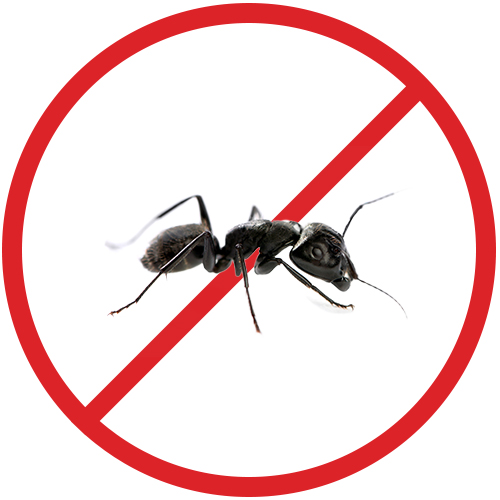Carpenter ants

The carpenter ant lives in a colony that may include thousands of inhabitants. There are many kinds of carpenter ants, but in general, its color is black with a red or brown tint sometimes. They are separated in three castes: reproducers (queens and males), soldiers and workers. The workers are between 7 and 10 mm long; males are about 10 mm and have two pairs of wings and a small head. Queens are bigger than the rest of the colony at about 15 mm. Sterile soldiers are workers with a much bigger head than the others and big mandibles enabling them to defend the nest.
Spring is the mating season of the carpenter ant. Males and young queens mate while in flight and not inside the nest. The male dies shortly after mating while the queen looks for the ideal site to start the colony: an old stump, a tree trunk or any humid wood. Once settled safely, the queen lays a first batch of eggs and takes care of the future workers. Afterwards, these worker ants take over all nest-building duties. A colony is mature when it counts 2,000 workers and more. A queen will need between three and six years to get to this point. It is then able to produce males and future queens; winged individuals will take a nuptial flight to continue the life cycle.
- Presence of big ants in the house.
- The smallest crumb or sweet food debris attracts the ants in droves.
- Any wood such as in the structure of a house is greatly affected by ants that chew through to expand their nest.
- Deterioration of the house by carpenter ants is considered a hidden defect when a house is sold.